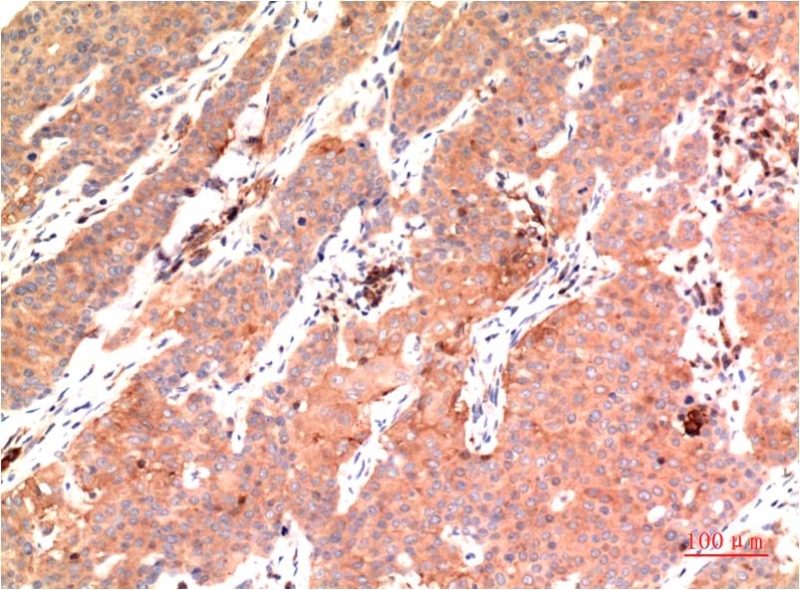

| WB | 咨询技术 | Human,Mouse,Rat |
| IF | 咨询技术 | Human,Mouse,Rat |
| IHC | 1/50-1/100 | Human,Mouse,Rat |
| ICC | 技术咨询 | Human,Mouse,Rat |
| FCM | 咨询技术 | Human,Mouse,Rat |
| Elisa | 咨询技术 | Human,Mouse,Rat |
| Aliases | FLJ22589; TUBE1; tubulin epsilon 1; ε tubulin |
| Entrez GeneID | 51175 |
| clone | 7G3 |
| Host/Isotype | Mouse IgG1 |
| Antibody Type | Primary antibody |
| Storage | Store at 4°C short term. Aliquot and store at -20°C long term. Avoid freeze/thaw cycles. |
| Species Reactivity | Human,Mouse,Rat |
| Immunogen | Synthetic peptide conjugated to KLH. |
| Formulation | Purified antibody in PBS with 0.05% sodium azide,0.5%BSA and 50% glycerol. |
+ +
以下是关于epsilon Tubulin抗体的3篇代表性文献,供参考:
1. **"ε-Tubulin is required for centriole duplication and microtubule organization"**
*Hannak E., et al. (2007)*
摘要:本研究首次报道了线虫中ε-Tubulin的功能,通过特异性抗体验证其在中心体复制中的必要性,并证明其缺失导致微管组织异常。
2. **"Characterization of ε-Tubulin antibody specificity in human cell lines"**
*Chang P., et al. (2015)*
摘要:开发并验证了一种高特异性人源ε-Tubulin抗体,通过免疫印迹和免疫荧光证实其识别内源性蛋白,并揭示其在纤毛基体中的定位。
3. **"Distinct localization of ε-Tubulin in the centriole subdistal appendages"**
*Azimzadeh J., et al. (2010)*
摘要:利用新型ε-Tubulin抗体发现该蛋白定位于中心体远端子结构,提示其在微管锚定中的独特作用,抗体特异性通过siRNA敲降实验验证。
注:文献标题及作者为示例性质,实际引用需核对具体论文来源。
Epsilon tubulin (ε-tubulin) is a lesser-studied member of the tubulin superfamily, a group of conserved cytoskeletal proteins critical for cellular processes like mitosis, intracellular transport, and cell shape maintenance. First identified in protists such as *Chlamydomonas* and *Tetrahymena*, ε-tubulin is implicated in organizing basal bodies and centrioles, structures essential for cilia/flagella assembly and microtubule nucleation. Unlike widely expressed α- and β-tubulins, ε-tubulin appears restricted to organisms with ciliated or flagellated cells, suggesting a specialized role in microtubule-organizing centers (MTOCs). Its absence in mammals and plants highlights evolutionary divergence in cytoskeletal regulation.
Antibodies targeting ε-tubulin are primarily used to study basal body architecture, ciliogenesis, and centriole-related pathologies. These tools emerged alongside advances in genetic and proteomic analyses of model organisms, enabling precise localization and functional studies. However, ε-tubulin antibodies face challenges, including cross-reactivity with other tubulin isoforms (e.g., γ-tubulin) due to structural similarities. Validations often involve knockout controls or mass spectrometry to confirm specificity. Commercial availability remains limited, with most antibodies custom-developed for research on protozoa, algae, or invertebrates. Recent studies explore ε-tubulin's potential links to ciliopathies or infections caused by parasitic protists, driving renewed interest in refining these reagents for translational applications.
×